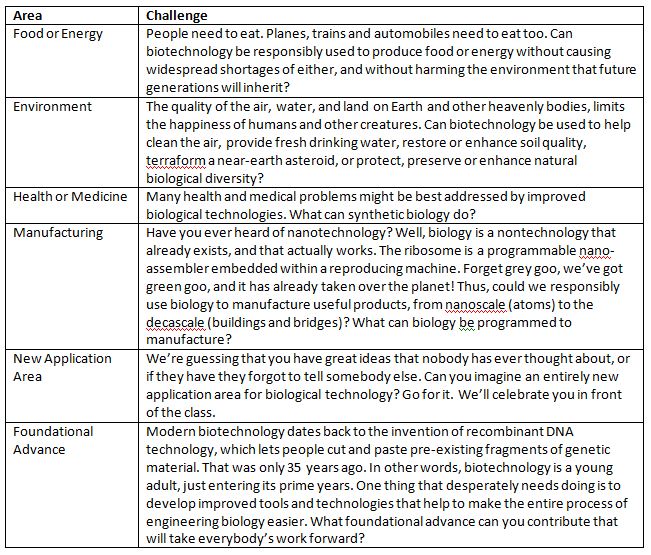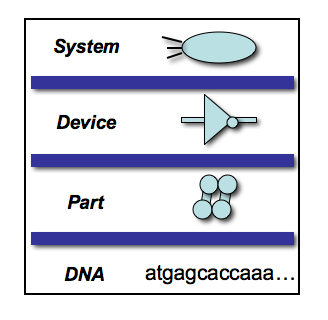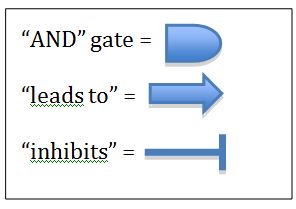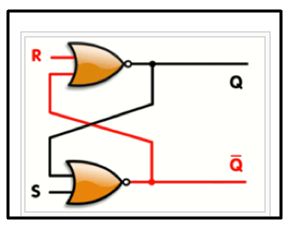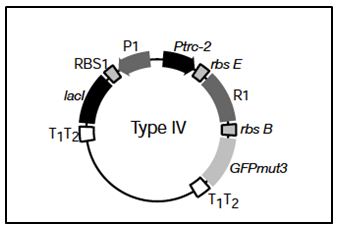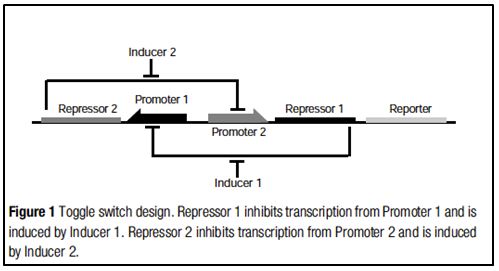BioBuilding: Synthetic Biology for Teachers: Design Assignment
|
Eau That Smell Lab notes |
PDF of this page
 Teacher ConsiderationsUsing the bacterial photography system as inspiration, this assignment asks the students (individually or in groups) to use their imagination as they propose a design for a genetic system. The emphasis is on the decisions made by engineers during the planning of the design process and not on the genetics. The students are asked to consider existing technologies, risk, reward, and testing. Of course, they are expected to imagine a genetic system that will make a significant contribution to life on earth. You can worry about its feasibility later. You may also find this design assignment useful for an iGEM team as it develops an idea for a project. Although the assignment itself is written for an individual student, it can be adapted for a group. The brainstorming exercises below lend themselves quite well to a group process, such as is needed within an iGEM team. Some good resources for teaching this activity are listed at the bottom of this page. You may wish to assign these readings or videos before trying the assignment as a class. When the students have completed this assignment, be sure they re-visit the BioBuilder website to share their design ideas and see some of the designs of others. They can do this at the "Submit Your Data" link. Guiding your students
BrainstormingQuestion 1: What does an engineered system look like, on paper and in reality?
Question 2: What will your focus area be?
Question 3: What particular problem do you want to address?
Question 4: Can you imagine a biotechnology to address this problem?
You get the idea. Remember that your assignment requires that you think big but stay away from science fiction. Question 5: How will you narrow down your choices?
Going Further
Systems to Devices
Think back to the bacterial photography system. We drew the system as two boxes, each with input and output arrows. One box had the "sensor," which detected the presence or the absence of the light (via the Cph8 protein). The other box was the "actuator," the parts needed to produce the pigment (by controlling β-Galactosidase production). In simple terms, the system requires two genetic devices. A block diagram might look like this: To further specify your system, try to think about what devices are needed. This is best accomplished by thinking in terms of inputs and outputs. To get started, work through some practice problems. Practice problem I: Bacterial Buoy 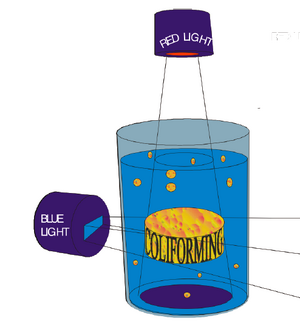 As a class we'll watch the first 5 minutes of the Melbourne team's iGEM presentation Next you should work out a high level overview of this system's behavior. Make a list of cellular inputs and outputs then write a block diagram that connects them. In other words: What inputs will the cell have to sense? What two ways will the cell respond? Don’t worry about getting the clump to disassemble when the lights are off. Just think about what the cells needs to do to make the clump and make it float. Importantly: don’t get bogged down by what really exists. If you need a "floatation" device, you can have one.
Your Challenge: Now think about your system. What devices would you need to create it? Again, don’t get bogged down by what already exists, but do keep it realistic. You are engineers. You may be able to make whatever device you need. So, if you need a “floatation device” or a “garlic smelling device”, go ahead. Devices to Parts
Sometimes devices are more complex assemblies of parts. Remember the "NOT" gate that described the bacterial photography system? That is a logic gate made from a transcription factor. As an exercise, consider another kind of logic gate. This one comes from electronics and is called a “latch.” It's made by cross-wiring two “NOR” gates. The gate is sometimes also called a “flip-flop” or “toggle” since it switches and holds between two states. Even if the initial input is removed, the circuit holds the output, until the other input is provided. In a landmark paper, this kind of electronic circuit was recapitulated with genetic parts by Jim Collins at Boston University (T S Gardner, C R Cantor and J J Collins. Nature 403(6767):339-42 (2000) PMID 10659857). Looking at the diagram of the plasmid below, we can see the parts that make up this switch: Starting at the top, we see an arrow pointing to the left. This is promoter 1. It is followed by a RBS and the lacl ORF, this is repressor R-2. Starting again at the top, we see promoter 2 (Ptrc-2) followed by a RBS, the repressor R1 ORF and the rbs and orf for a GFP (green fluorescent protein) reporter. So, how do these parts function as a toggle switch? As we can see in the second diagram: If promoter P-2 is on, then it will turn on the reporter gene and the cell will glow green. But it will also turn on expression of repressor R-1. This will shut down promoter P-1 which will therefore not enable the repressor R-2 to be expressed. So, the cell will continue to glow green until P-1 is induced. Once P-1 is on, it will turn on R-2 which will repress P-1. Now the cell will not make the GFP reporter and will not glow green. And, since P-2 is repressed, no R-1 will be made and the cell will stay in the dark. Got that? Well, in order to prove you understand something, you need to be able to explain it. So, now you try it: List each of the components and what its role is in the toggle device. Then, using the diagrams and your list, write an explanation of how these parts work in combination in the toggle device. Finally, explain the system to your lab partner or a stuffed animal. Your Challenge: Think about the devices that make up your system. Then, think about the parts that are needed in each device. For each device list its parts. Don't worry if these parts actually exist. However, you should be specific where possible. For example, if you need a promoter that is induced by high salt concentration, write that you need a promoter that is induced by high salt concentration. We can search the Registry for one later...
Resources (just a sample)Here are some background readings and videos that teach about synthetic biology, its goals and projects. You may wish to provide your students with these resources. Decoding Synthetic Biology (YouTube)
How to Make Life AssessmentGrading RubricsDesign Assignment Rubrics and Scoresheets (pdf) SurveyTo help us improve the labs, you can
Thanks! FeedbackWe're always looking to hear back from you if you've thought about this unit, tried it, or stumbled across it and want to know more. Please email us through BioBuilder, info AT biobuilder DOT org. Navigation
|
